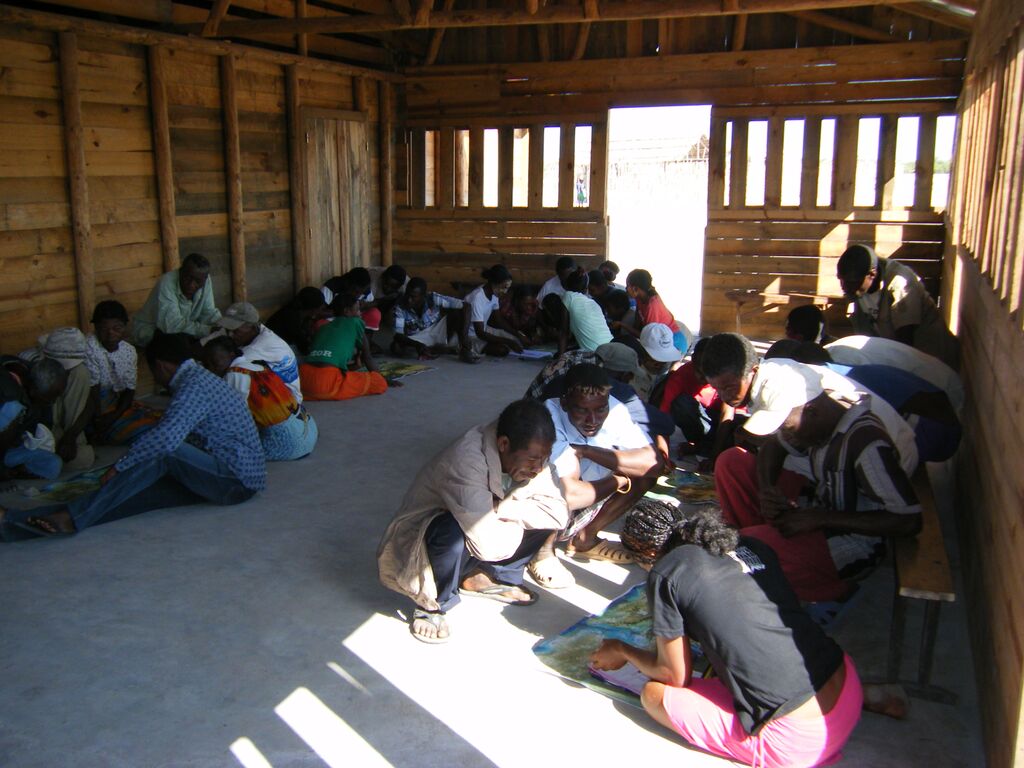

Une cartographie participative est entreprise avec les communautés pour comprendre les schémas spatiaux (utilisation des terres, régime foncier, type d'occupation des sols, changements et tendances historiques) et l'état et l'utilisation des ressources de la mangrove dans la zone du projet. L'imagerie Google Earth couvrant l'ensemble de la zone d'intérêt (AOI), combinée à des questionnaires, est utilisée pour évaluer la perception de l'utilisation des ressources par la communauté. Toutes les parties prenantes (agriculteurs, bûcherons, collecteurs de bois de chauffage, producteurs de charbon de bois, fabricants de chaux, anciens et pêcheurs), identifiées lors des entretiens avec les informateurs clés, sont impliquées dans cet exercice et une carte de l'utilisation des ressources de la zone d'intérêt est créée. Ils sont divisés en groupes d'activités et le nombre de personnes par groupe doit être d'au moins 5. Une seule personne est désignée dans le groupe pour dessiner les limites de chaque type d'utilisation des terres sur la carte. Idéalement, chaque groupe devrait être assisté par un membre du personnel de l'organisation de soutien. Chaque groupe est composé de personnes de sexe et d'âge différents (hommes et femmes/jeunes et vieux) qui sont déjà actives dans les activités respectives (généralement plus de 15 ans).
- Une carte Google Earth à haute résolution de la zone est disponible et contient des points de repère familiers (par exemple, un bâtiment scolaire, une église) afin de faciliter la lecture par la communauté.
- Les questionnaires destinés aux parties prenantes et visant à recueillir des informations supplémentaires sur l'utilisation des ressources sont disponibles et traduits dans le dialecte local afin d'éviter toute confusion.
- Assurez-vous que le village est informé à l'avance et il serait préférable de vérifier auprès de la communauté le moment qui lui convient pour entreprendre l'exercice (marée de mortes-eaux lorsqu'ils ne vont pas à la pêche ou marée de printemps lorsqu'ils reviennent de la pêche) ;
- L'exercice de cartographie devrait durer entre 2 et 3 heures pour s'assurer que les parties prenantes se concentrent sur les activités.
- Le personnel de l'organisation de soutien doit être familiarisé avec le dialecte local et éviter d'utiliser des termes scientifiques/très techniques.
- Le consensus entre les groupes doit être respecté avant de tracer les limites sur la carte.
- Le facilitateur doit être en mesure d'analyser rapidement les informations fournies par la communauté au cours de l'exercice.